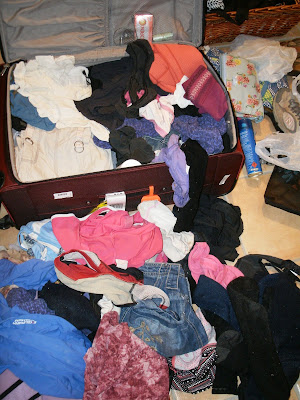Kmart guy who saved the day....
As you know, I had no camera batteries, which means no ability to take pictures on my trip to Uluru the next day. The minute I returned from the Larapinta Trek to Alice Springs, I was on a mission to find some batteries. Of course, the first stop was the bottle shop, (hey, a girl's got her priorities!), much to my dismay, they did not sell camera batteries at the bottle shop. :-) So, I asked the bottle shop worker when Kmart closed (as I had heard a rumor that there was one somewhere around there. They said "5:30, I think". Shit! It was almost 5:30 now! but, then another worker corrected him, and said "Nope, it's 6:00". So, then I went to the grocery to get some snacks, as well as one person had suggested that they thought the grocery had camera batteries,, and asked the same thing. This time the answer I got was "7:00 pm". On the way to Kmart, I stopped at the News Agent to see if they had batteries (as getting to Kmart meant walking through the creepy part of town), and they said, "5:00. Sorry, mate, It's already closed". Not to be deterred, I walked to Kmart anyway. My lucky stars were shining down on me, because Kmart was still open for another 15 minutes!
My deluxe hotel.... :-)
My deluxe hotel room.... :-)
Out for Thai food with the ladies on our last night together. First time we've seen each other with our hair combed and not reeking of sweat....
Our boss picked us up at 5 am sharp. It was a bit embarrassing riding on this big ass bus, especially with only 8 people or so, on our tour.....what a waste of petrol! I felt like SUCH a tourist. :-)
Vivid colors....orange sands, blue skys
The first place we went to was the Olgas - Aboriginal name is: Kata Tjuta
Here you see Kata Tjuta off in the distance...
Me at Kata Tjuta
Look at the magnificant colors of the Kata Tjuta walls...

The first camel in Australia was imported from the Canary Islands in 1840 by Horrock. The next major group of 24 camels came out in 1860 for the ill-fated Bourke and Wills expedition. The first time the explorer Giles used camels he travelled 220 miles in 8 days without giving water to the camels. He later went from Bunbury Downs to Queen Victoria Springs (WA), a distance of 325 miles in 17 days and gave one bucket of water to each camel after the twelfth day.
Camel studs were set up in 1866, by Sir Thomas Elder at Beltana Station in South Australia. These studs operated for about fifty years and provided high class breeders. Working camels bred in Australia were of superior quality to those imported. Imports continued until 1907 from Palestine and India as there was a need for large numbers of cheap animals.
An estimated 10,000 to 12,000 camels, imported into Australia between 1860 and 1907, were used as draft and riding animals by people pioneering the dry interior.
Central Australia used camels in the construction of the Overland Telegraph line, the supply of goods to Alice Springs and to cattle and sheep stations, missions and Aboriginal communities. Camels hauled wagons loaded with wool to the railhead at Oodnadatta, pulled scoops and ploughs to build dams or perform other heavy jobs.
Most of the camels were released in the mid 1920s, when motor vehicles began operating in the central areas of Australia. They established free-ranging herds in the semi-arid desert areas of Australia.
In the late 1960s renewed interest occurred in camels and by 1970 Australia had two camel tourist businesses both operating in Alice Springs. 1971 saw the inaugural Lions Club Camel Cup race in Alice Springs. There are now several camel races held around Australia. These races are over about Ikm as compared to the long distance races (10km+) in Saudi Arabia. The slaughter of camels for human consumption commenced at Alice Springs in the 1980s.
Uluru from a distance - viewed through the front window of the bus...thus the squashed bugs in the view. :-)



Kata Tjuta off in the distance
Time for some dinner...
Celebration!
Now, time to pack up and go home.....



















No comments:
Post a Comment